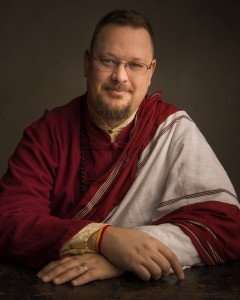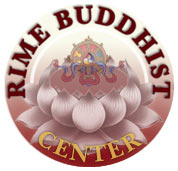Encouragement to Adopt a Nonsectarian Outlook
 “Buddha, the greatest of spiritual friends, gave the most appropriate instructions to each and every being throughout space. His collected discourse is, as you might image, as deep as the ocean – very difficult to fathom.” – Shabkar Tsogdruk Rangdrol
“Buddha, the greatest of spiritual friends, gave the most appropriate instructions to each and every being throughout space. His collected discourse is, as you might image, as deep as the ocean – very difficult to fathom.” – Shabkar Tsogdruk Rangdrol
As many of you know, the Rime Center is a non-sectarian Dharma Center; established that way by our founders Lama Chuck and Mary Stanford. Their vision for the Rime Center was of a place where people could come together to learn about Buddhism and find a refuge for the nurturing of inner peace, kindness, community understanding and world peace.
Many people, though, are unsure what exactly it means to be Rime. Is it a Tibetan lineage or school? Does it mean that we can take practices and methods from different traditions and make it our own, like we are making a salad? Unfortunately, it doesn’t mean any of that.
What Rime does mean is that we recognize the value and benefit of multiple points-of-view and flavors of Buddhism. At the most fundamental level, Rime is expressed as a feeling of respect based on faith in the different traditions. This is characterized by an open-minded approach, which longs to understand the distinguishing factors of different traditions. There is a sense of wanting to know more, to expand one’s understanding and perspective. It is a process of investigation where the individual actively probes and tests different ideas.
As people progress with their understanding and develop a sense of stability in their view they then see how each tradition relates to the others and how they can bring benefit to different types of people. As the Rime yogi Shabkar Tsokdruk Rangdrol said,
“In the arya land of India, the teaching spread and came to include the eighteen schools of the shravakas, whereas in the snowly land of Tibet, we find the distinctive flavors or Sakya, Geluk, Nyingma, the Kagyu schools of Drukpa, Drikung, and Dakpa, Shije, Chod, Jonang, Bodong, and so on, each with its unique flavor and yet all committed to the fundamental teaching of Buddha.”…”Just because one teaching doesn’t suit a particular individual, it doesn’t mean it won’t help anyone.”
As we begin our journey, it is important that we connect to the view and instructions passed on through our own lineages. This is crucial in maintaining authenticity of the teachings. The Rime Center has strong roots with the Nyingma, Kagyu, and Gelug traditions. We also have connections to the Thai Buddhist tradition thanks to our connection with Santikaro and the Zen tradition due to our connection with Maezen Miller.
I would encourage those who are new to Buddhism and the Rime Center to explore the vast ocean of the Buddhadharma with a nonsectarian outlook. Learn about the different flavors offered and explore them all. As you do this, you will find that some teachings suit you better than others. Once you discover that you should focus on those teachings. Again, Shabkar Tsokdruk Rangdrol said,
“To quench your thirst, there is no need to drink the entire stream; a few mouthfuls will suffice. Similarly, liberation can be achieved by practicing a few Dharma instructions; there is no need to practice them all”
His Holiness the Dalai Lama’s advice to Westerners who are practicing Buddhism is, “I would like to insist upon the importance of non-sectarianism. It sometimes happens that people attribute an exaggerated importance to one or another of the different schools and different traditions within Buddhism, and this can lead to an accumulation of extremely negative acts with regard to the Dharma. The advantage of non-sectarianism is that after receiving the transmission of the instructions, initiations, and explanations pertinent to each different tradition, we will be able to have a better understanding of the different teachings. From my own experience, this is without doubt very beneficial. Consequently, if we keep a non-sectarian attitude, as we receive teachings from different traditions, think about them, and put them in practice, it is certain we will improve our understanding of the Dharma. This is why non-sectarianism is so important.”
If you want to learn more about the Rime philosophy, I would encourage you to read the newly released book, Emanated Scripture of Manjushri by Shabkar Tsongdruk Rangdrol. Many of the quotes in this article came from his chapter on ‘Encouragement to Adopt a Nonsectarian Outlook’.

